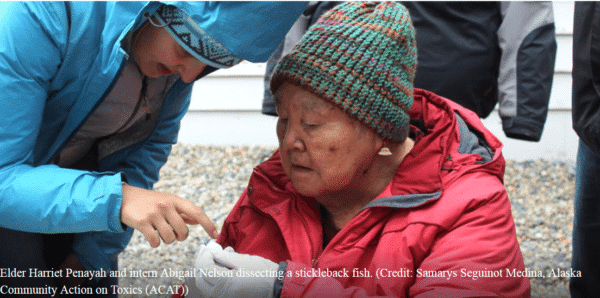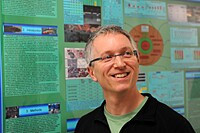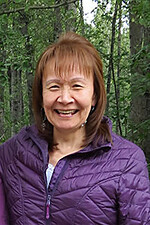
The Yupik People of Saint Lawrence Island, Alaska report high rates of cancer, thyroid disease, diabetes, heart disease, and birth defects. One cause of these negative health outcomes may be toxic exposure to persistent organic pollutants. St. Lawrence Island residents face combined exposures to contaminants at abandoned military installations from the Cold War era and from atmospheric deposition into the Arctic. The Yupik People have 6-10 times higher PCBs in the blood of their people than the average American in the lower 48.
Persistent chemicals bio-accumulate up the food web and concentrate in the body fats of walruses, seals, and whales. As a result, the marine mammals that are a mainstay of the traditional diet contain high levels of pollutants such as PCBs though these chemicals were banned globally decades ago. A National Institute of Environmental Health Sciences (NIEHS) funded community-based participatory research project on the Island is working to document levels of PCBs, flame retardant chemicals, perfluorinated compounds, and chlorinated pesticides through sampling of freshwater fish, household dust and blood serum of residents.
On December 13 at 9am Alaska / 10am Pacific / 1pm Eastern, we heard how this collaborative research is helping to identify what contaminants are present and to find solutions to reduce exposures.
Featured Speakers
 Frank von Hippel, PhD, is a Professor in the Department of Biological Sciences at Northern Arizona University. Frank’s research incorporates molecular, organismal, and ecological approaches to solve problems in ecotoxicology. A critical component of several of Frank’s research projects is community-based participatory research with indigenous people. He has active research projects in Alaska, Arizona, Guatemala, Ecuador, Israel and Australia, with grants from the National Institutes of Health, the Flinn Foundation, the Australian Research Council, and the Anindilyakwa Land Council. Frank’s research has been widely covered in the press, including The New York Times, National Public Radio, The Economist, The British Broadcasting Corporation, and many other media outlets. Frank is an Associate Editor of the Elsevier journal Environmental Pollution, where he is responsible for 200 manuscripts per year. Environmental Pollution ranks 20 out of 229 environmental science journals (impact factor = 5.099). Frank is also on the board of the Science Communication Network.
Frank von Hippel, PhD, is a Professor in the Department of Biological Sciences at Northern Arizona University. Frank’s research incorporates molecular, organismal, and ecological approaches to solve problems in ecotoxicology. A critical component of several of Frank’s research projects is community-based participatory research with indigenous people. He has active research projects in Alaska, Arizona, Guatemala, Ecuador, Israel and Australia, with grants from the National Institutes of Health, the Flinn Foundation, the Australian Research Council, and the Anindilyakwa Land Council. Frank’s research has been widely covered in the press, including The New York Times, National Public Radio, The Economist, The British Broadcasting Corporation, and many other media outlets. Frank is an Associate Editor of the Elsevier journal Environmental Pollution, where he is responsible for 200 manuscripts per year. Environmental Pollution ranks 20 out of 229 environmental science journals (impact factor = 5.099). Frank is also on the board of the Science Communication Network.
 Vi Waghiyi is Environmental Health and Justice Program Director at Alaska Community Action on Toxics. Vi is a bilingual Yupik who was born in Savoonga on St. Lawrence Island. Although her family moved to Nome, she grew up in both communities, traveling between Nome and the Island throughout her childhood. Vi was hired in 2002 to work in Anchorage to assist on the St. Lawrence Island environmental health and justice project. She became the Project Coordinator in 2004, which included supervising ACAT’s research staff on St. Lawrence Island. When her work expanded in 2005, Vi’s title was changed to Environmental Justice Community Coordinator. In 2009, she stepped into the position of Program Director to share responsibilities with the executive director for all of ACAT’s efforts. In 2010, she was awarded the Environmental Achievement Award in Recognition of Valuable Contributions to Environmental Excellence in Alaska by the Alaska Native Tribal Health Consortium. In 2012 leaders of Savoonga presented Vi with a certificate of appreciation “for the dedication and devoted service as an Ambassador of St. Lawrence Island for protecting our health and human rights.” She serves as a National Advisory Environmental Health Sciences Council member to the National Institute of Health. Vi is sought out repeatedly to speak at national and international meetings about ACAT’s work.
Vi Waghiyi is Environmental Health and Justice Program Director at Alaska Community Action on Toxics. Vi is a bilingual Yupik who was born in Savoonga on St. Lawrence Island. Although her family moved to Nome, she grew up in both communities, traveling between Nome and the Island throughout her childhood. Vi was hired in 2002 to work in Anchorage to assist on the St. Lawrence Island environmental health and justice project. She became the Project Coordinator in 2004, which included supervising ACAT’s research staff on St. Lawrence Island. When her work expanded in 2005, Vi’s title was changed to Environmental Justice Community Coordinator. In 2009, she stepped into the position of Program Director to share responsibilities with the executive director for all of ACAT’s efforts. In 2010, she was awarded the Environmental Achievement Award in Recognition of Valuable Contributions to Environmental Excellence in Alaska by the Alaska Native Tribal Health Consortium. In 2012 leaders of Savoonga presented Vi with a certificate of appreciation “for the dedication and devoted service as an Ambassador of St. Lawrence Island for protecting our health and human rights.” She serves as a National Advisory Environmental Health Sciences Council member to the National Institute of Health. Vi is sought out repeatedly to speak at national and international meetings about ACAT’s work.
This call was hosted by the CHE-Alaska Partnership. It lasted for 60 minutes and was recorded for the call and webinar archive.
